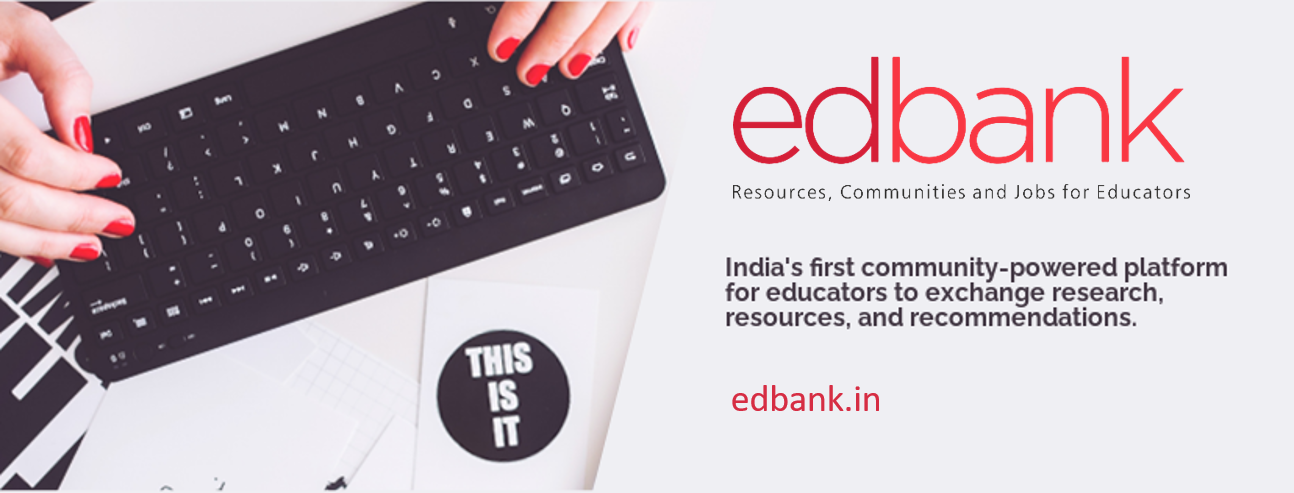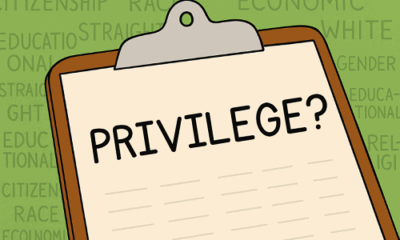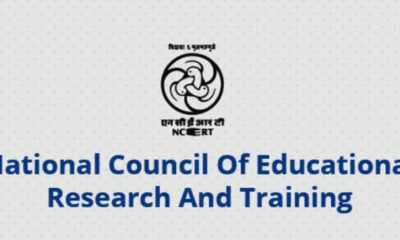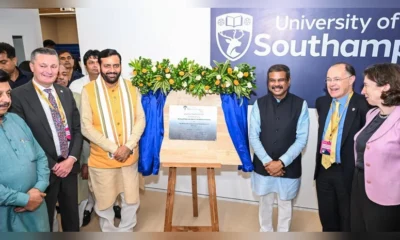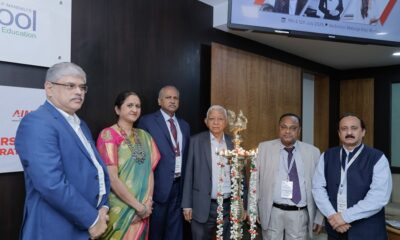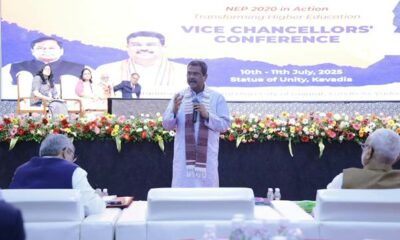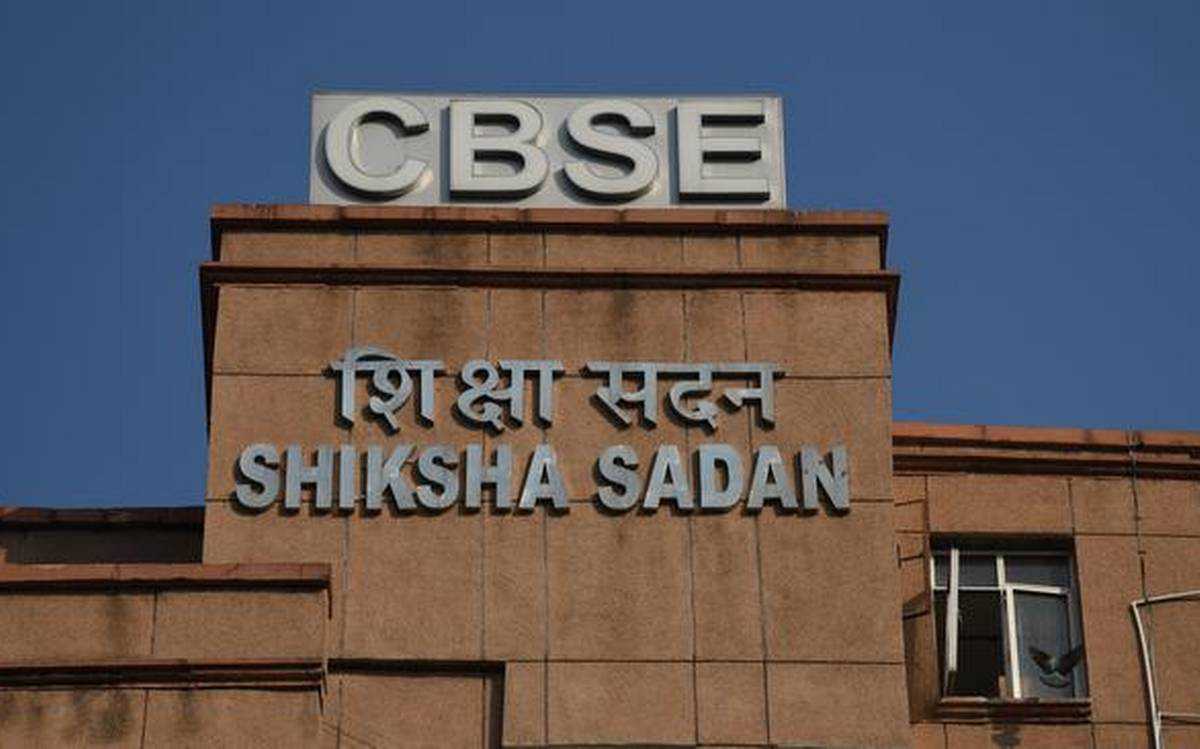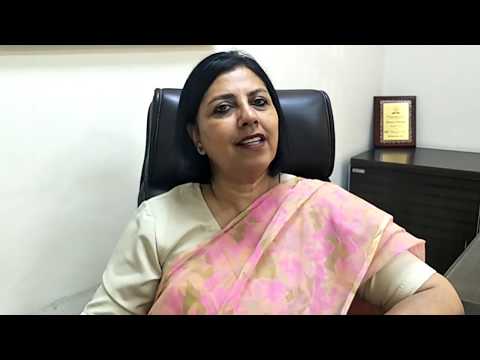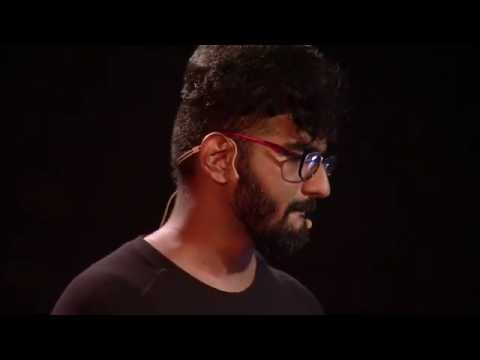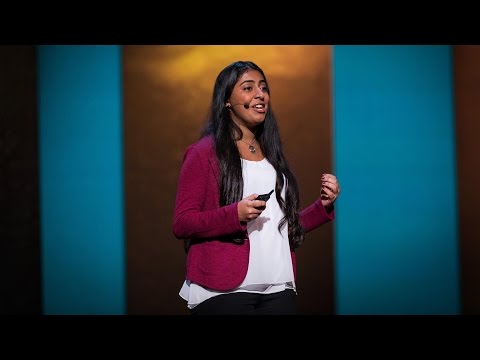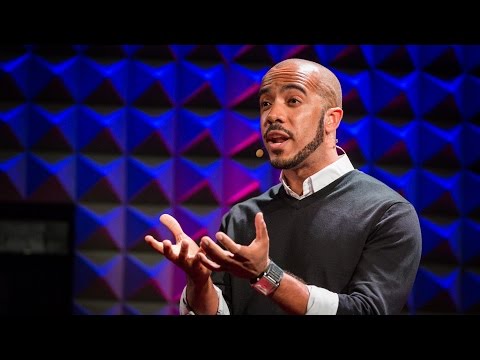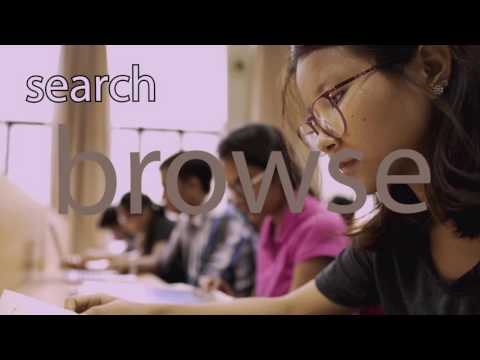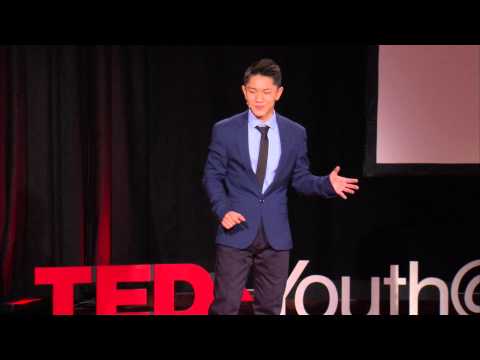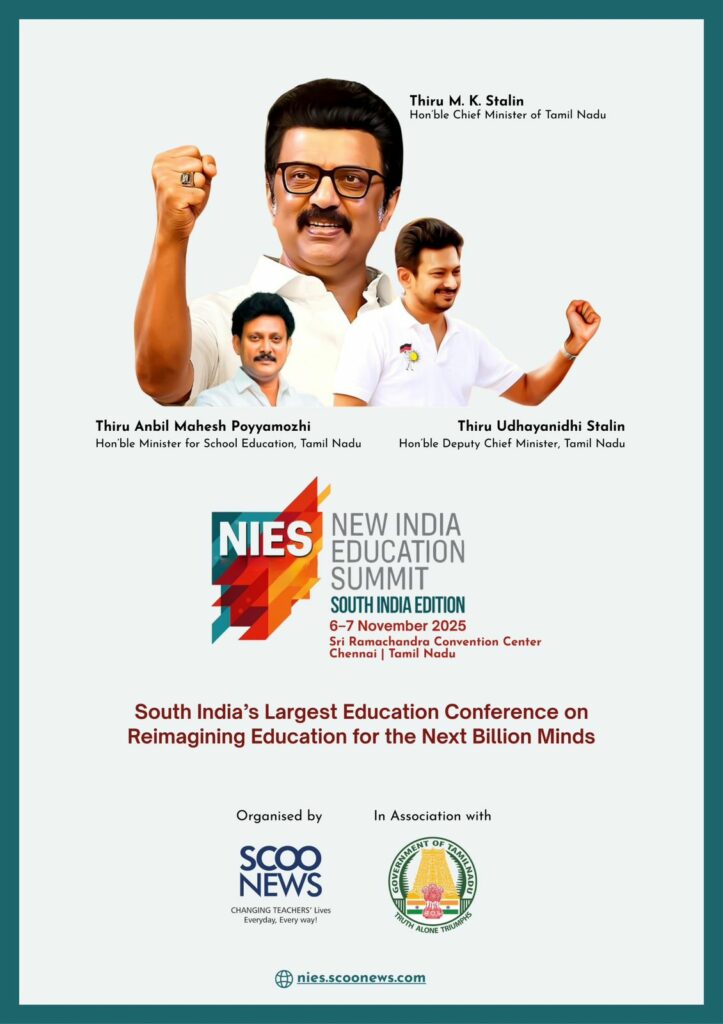News
A Six-Point Plan By UNICEF To Protect Our Children
Global coordination is urgently needed to prevent the COVID-19 crisis from becoming a child-rights crisis.
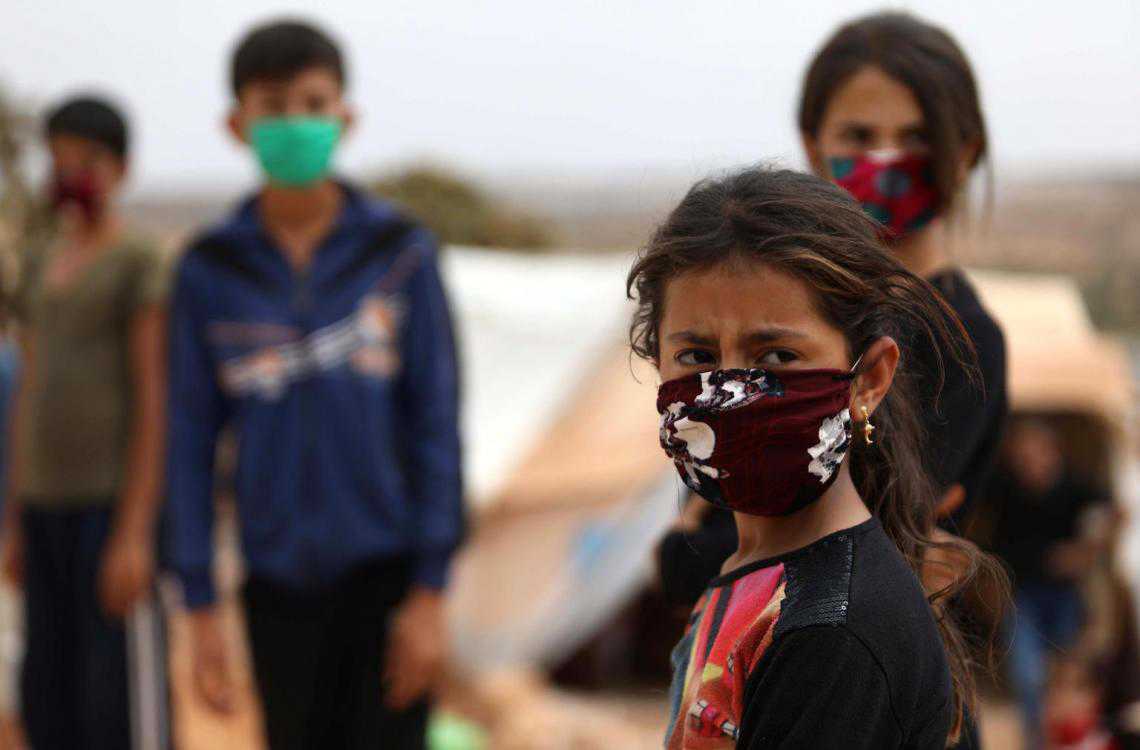
In the wake of the COVID-19 crisis, governments around the world have mobilized billions of dollars to save their economies. But there is another impending and devastating loss if we do not act: a lost generation of children.
Progress towards the Sustainable Development Goals is slipping backwards, and children continue to pay the steepest price. Without coordinated, global action to prevent, mitigate and respond to the effects of the pandemic, the consequences for children now, and for the future of our shared humanity, will be severe.
This six-point plan proposes a set of practical and concrete actions to reunite the world around a common cause: the realization of the Sustainable Development Goals and the Convention on the Rights of the Child.
To do so, decision-makers must start by listening to children and young people and including them in decision-making. It is they, especially girls; children facing poverty, exclusion, or violence; those with disabilities; children affected or displaced by a humanitarian crisis; and children without parental care, who will live with the impact of this pandemic for decades to come. UNICEF calls for global action to:
1. Ensure all children learn, including by closing the digital divide
At their peak, nationwide school closures disrupted the learning of 91 per cent of students worldwide. Marginalized children suffer the heaviest burden: some 463 million young people were not able to access remote learning during school shutdowns. What’s more, previous shutdowns demonstrate that children who are out of school for extended periods, especially girls, are less likely to return.
UNICEF asks governments and partners to:
-
Prioritize the reopening of schools: Take all measures possible to reopen schools safely and keep them open.
-
Increase education funding and ensure equal access to quality, violence-free education so every child learns. This will require a focus on the most marginalized children, including girls, children under attack and on the move, children with disabilities, and children living in rural communities or without access to the internet.
-
Close the digital divide by connecting all children and young people to the internet by 2030 and reaching 3.5 billion children and young people with safe, quality, accessible and equitable online learning.
-
Protect schools and places of learning from attack, and hold perpetrators of these attacks to account.
2. Guarantee access to health and nutrition services and make vaccines affordable and available to every child
A child survival crisis looms, with the children at greatest risk of hunger and disease now seeing their already-fragile health and food systems buckle under the strain of COVID-19. A fragmented and inequitable response to both treating and vaccinating against COVID-19 only risks prolonging the pandemic.
UNICEF asks governments and partners to:
-
Urgently ensure the continuity of key health and nutrition services for children and young people – especially routine immunization, prioritizing the hardest to reach.
-
Unite to fight the spread of misinformation and build back confidence in routine immunization.
-
Collect gender-, age- and disability-disaggregated data on children and young people, including for those who have contracted COVID-19, and invest in research to better understand its impact on their health and well-being.
-
Ensure every child and young person has equal and affordable access – regardless of where they live – to COVID-19 diagnostics, therapeutics and vaccines as part of a comprehensive package of essential care.
-
Ensure any new funding expands access to other essential health services for children and young people, including by training and supporting health-care workers.

3. Support and protect the mental health of children and young people and bring an end to abuse, gender-based violence, and neglect in childhood
The world is waking up to the extent – and lasting impacts – of child abuse and neglect. But the COVID-19 crisis has only exacerbated violence, exploitation, and abuse as children are cut off from key support services while simultaneously suffering the additional stress placed on families in turmoil. Girls are particularly vulnerable, with child marriage and adolescent pregnancy already on the rise.
UNICEF asks governments and partners to:
-
Integrate sustainable child mental health and psychosocial support funding in all global humanitarian responses and commit to increased multi-year funding to better meet the protection needs of children in crisis.
-
Prioritize the prevention of and response to gender-based violence in global humanitarian action, increasing funding for gender-specific interventions.
-
Invest in gender-sensitive mental health and psychosocial support for children, young people and their caregivers:
-
Provide parenting support to all those who need it and strengthen child helplines and other child-focused reporting mechanisms.
-
Designate formal and informal social service workers and services – including for gender-based violence, child protection, and sexual and reproductive health services – as essential.
-
Invest in gender-sensitive mental health and psychosocial support services for children, adolescents and their caregivers, including through schools, social services and communities.
-
4. Increase access to clean water, sanitation and hygiene and address environmental degradation and climate change
COVID-19 may not have been directly caused by climate change, but there are strong linkages pointing to environmental degradation as a common underlying risk factor. Unreliable access to safe water due to changes in climate also limits people’s ability to practise life-saving hygiene measures like handwashing. Our vulnerability to this pandemic has only underscored the risk of not taking immediate action to protect against environmental degradation and climate change.
UNICEF asks governments and partners to:
-
Guarantee universal access to clean water and handwashing for children and families through national policies, private sector cooperation, community engagement and behaviour-change initiatives.
-
Invest in climate-resilient water, sanitation and hygiene (WASH) services in homes, schools, hospitals and public spaces to make communities better prepared for future pandemics and other shocks.
-
Integrate child rights into key national climate change and adaptation strategies, policies and planning documents, including the Nationally Determined Contributions (NDCs) and National Adaptation Plans (NAPs), as well as COVID-19 response and recovery plans and budgets.
-
Continue to pursue, implement and monitor climate and environmentally focused targets outlined in the Sustainable Development Goals and the Paris Agreement.
-
Teach children and young people about climate change, the environment and responsible and sustainable consumption and production.
5. Reverse the rise in child poverty and ensure an inclusive recovery for all
The economic crisis caused by COVID-19 threatens to hit children the hardest, with the number of children living below their national poverty lines expected to soar by 140 million by the end of the year. Economic crises are often followed by cuts to government spending, including on programmes for children. If the world repeats this pattern in the wake of COVID-19, poverty and deprivation among children will continue to rise, even after the immediate crisis has waned. An inclusive recovery plan is imperative to prevent countless more children from reaching levels of poverty unseen for many years.
UNICEF asks governments to:
Marshal global resources to ensure an inclusive, gender-sensitive recovery, and support national fiscal responses that prioritize children and their families:
- Maintain or increase overseas aid commitments, identifying context-specific new financing options and direct funding to those countries most affected and least able to take on new lending.
- Act on debt relief, including extending current debt service suspension to middle-income countries. Ensure coordinated action covering all creditors to restructure and, where necessary, reduce debt.
- Include investment in key services for children and young people as part of domestic stimulus packages and ring-fence existing spending on the most vulnerable children.
Expand resilient social protection programmes for the most vulnerable children and their families, including cash transfers for every child and child-friendly services like affordable, quality childcare.
6. Redouble efforts to protect and support children and their families living through conflict, disaster and displacement
Even before the pandemic, 2020 was set to see more people than ever in need of humanitarian assistance. COVID-19 has compounded the vulnerabilities of migrant, displaced, and refugee children, as well as those living in crisis-affected countries. And whether the result of active conflict or new pandemic restrictions, it is becoming harder to reach the most vulnerable children with essential and life-saving services. COVID-19 must not become an excuse to divert attention from these children.
UNICEF asks governments to:
-
Increase and maintain funding for emergencies to prevent multiple, catastrophic and protracted crises and to save children’s lives, alleviate their suffering and preserve their dignity. In all humanitarian responses, prioritize child rights and child protection, in line with the Core Commitments for Children.
-
Ensure immediate and unimpeded humanitarian access.
-
End attacks on children and on civilian infrastructure critical for their survival, such as water, sanitation, and health-care facilities and personnel. Hold the perpetrators of these attacks to account.
-
Include internally displaced, refugee and migrant children in national systems, policies and plans – starting with COVID-19 recovery and response efforts.
-
Fight the virus, not each other. Implement and uphold the United Nations Secretary-General’s call for a global ceasefire.
What is UNICEF doing to support children during COVID-19?
Our response to the coronavirus disease must reimagine a world fit for every child. History has shown that UNICEF, together with partners, has the experience and reach to improve the lives of millions of children and their families. We were there for the post-World War II refugee crisis – and have responded to every natural disaster, armed conflict, famine and disease since.
And we are here now, in 192 countries and territories, working with communities, governments and partners to slow the spread of COVID-19 and minimize the social and economic impacts on children and their families. We are:
-
Working with governments, authorities and global health partners to ensure vital supplies and protective equipment reach the most vulnerable communities.
-
Prioritizing the delivery of life-saving medicines, nutrition and vaccines, and working closely with governments and logistics networks to mitigate the impact of travel restrictions on the delivery of these supplies – including by supporting the COVAX initiative and preparing for a COVID-19 vaccine.
-
Working with partners to urgently distribute water, sanitation and hygiene facilities to the most vulnerable communities.
-
Ensuring the continuity of key health and nutrition services – including routine immunization – focusing on the most vulnerable children.
-
Distributing vital public health messaging and advice to slow the transmission of the virus and minimize mortality.
-
Supporting governments to prioritize schools in their reopening plans and take all possible measures to reopen safely.
-
Providing advice and support to parents, caregivers and educators to support home and remote learning, where schools remain closed, and working with partners to design innovative education solutions.
-
Working with partners to bridge the digital divide and bring internet connectivity to 3.5 billion children and young people by 2030.
-
Providing guidance to employers on how best to support working parents, and designing new social protection solutions that ensure the poorest households can access critical funding.
-
Providing peer-to-peer learning and information sharing between children, adolescents and young people to support their mental health and combat stigma, xenophobia and discrimination.
-
Working with governments, authorities and other partners to ensure child rights and child protection measures are embedded in the immediate COVID-19 response and longer-term recovery planning.
-
Stepping up the work with refugee and migrant children and those affected by conflict to ensure they are protected from COVID-19.
-
Supporting meaningful child participation in the development and implementation of programmes responding to COVID-19.
Education
Government Plans to Introduce Skill-Based Learning in Class 11 and 12 Curriculum

The Government is working on incorporating skill-based learning into the curriculum of Classes 11 and 12, in line with the recommendations of the National Education Policy (NEP) 2020. Union Education Minister Dharmendra Pradhan announced the move during the Dakshinapatha Summit 2025 held at the Indian Institute of Technology, Madras.
Pradhan emphasised that India’s education system needs a paradigm shift, moving beyond degree and certificate-oriented models to competency-based approaches. “We are on the job to introduce skill-based curriculum of Class 11 and 12,” he said, underlining the importance of preparing students for a rapidly evolving world of work.
According to the Minister, one of the central recommendations of the NEP 2020 is skill-based education. While previously optional, skilling will now become a formal part of schooling, starting as early as Class 6. The new curriculum will integrate areas such as computer coding, drone technology, and artificial intelligence, alongside conventional subjects like mathematics and languages. “Now, we are planning to introduce skilling also. It is a new era. We have to train our youngsters and align them with the new curriculum structure,” Pradhan explained.
The Minister highlighted examples of innovation emerging from IIT Madras, including student-led startups. He thanked IIT-M Director Kamakoti and his team for promoting and facilitating young talent. He also noted how the NEP has enabled students excelling in fields such as sports and music to access IIT programmes, which were previously out of reach.
Pradhan reiterated that languages play a crucial role in communication, adding that knowledge of multiple languages, including Tamil, reflects India’s cultural and intellectual vibrancy. On the same occasion, he interacted with students from Tamil Nadu government schools who had joined IIT Madras through the ‘IITM for All’ initiative, particularly its four-year online BS Data Science programme.
With over 1.75 lakh startups in India, Pradhan noted that the education system must support a shift from job-seeking to job-creating. He described the NEP 2020 as a philosophical document guiding the country towards the vision of Viksit Bharat by 2047.
Source: PTI
Education
Maharashtra Education Department Plans Students’ Tour to NASA

The Maharashtra state education department has announced an ambitious plan to send 51 finalists of its school-level science project competitions on an educational tour to the National Aeronautics and Space Administration (NASA) every year. The initiative, however, still awaits final approval despite having been cleared in principle by Chief Minister Devendra Fadnavis earlier this year.
Minister of State for School Education Pankaj Bhoyar explained that the move is designed to recognise the efforts of students beyond prize-winning entries. “The state education department organises science project competitions at various levels. While we extend prizes to the best projects, the efforts taken by students who do not win prizes should also be given their due recognition. Therefore, the plan to honour their efforts was formulated,” he said.
According to the proposal, students with the top 21 projects from the tehsil-level competition will be taken to visit a science centre at the division level. Winners of the top 51 projects at the district level will be taken to the Indian Space Research Organisation (ISRO) headquarters in Bengaluru. The final 51 students selected at the state-level competition will be taken on a study tour to NASA. The programme has been named the Chief Minister Vidyarthi Vigyan Vari.
Officials within the department have confirmed that the proposal requires an annual budget of around Rs 3 crore for the NASA trip. While the costs for tehsil and district-level visits will be met through District Planning and Development Council (DPDC) funds, the NASA tour requires state-level approval. “We hope to get clearance soon,” an official said.
The initiative aims to encourage students to pursue scientific research beyond one-off projects and to inspire them through exposure to advanced scientific institutions. “The aim is to encourage students not to stop at one science project but to push them further into the world of scientific research,” Bhoyar said.
In a related move, the state government has recently increased the prize money for the winner of the state-level science project competition from Rs 5,000 to Rs 51,000, underlining its commitment to promoting innovation among young learners.
Education
Ministry of Education launches Viksit Bharat Buildathon 2025 to Ignite Innovation among School Students
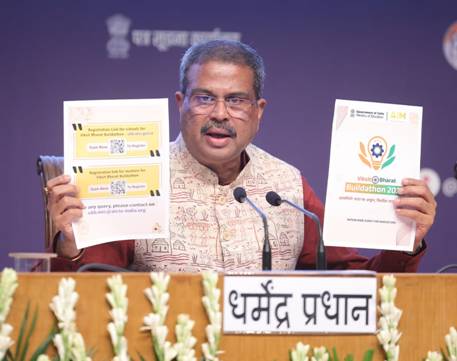
The Ministry of Education today launched the Viksit Bharat Buildathon 2025, a nationwide innovation movement aimed at engaging school students across India. Organised by the Department of School Education & Literacy (DoSEL) in collaboration with Atal Innovation Mission, NITI Aayog, and AICTE, the initiative was formally unveiled with the release of its jingle and logo.
The event was attended by Secretary, Department of School Education & Literacy, Sanjay Kumar; Principal Director General, Press Information Bureau, Dhirendra Ojha; Chairman, AICTE, Prof. T. G. Sitharam; Vice Chairman, AICTE, Abhay Jere; Mission Director, AIM, NITI Aayog, Deepak Bagla; Additional Secretary, DoSEL, Dhiraj Sahu; along with senior officials of the Ministry, Kendriya Vidyalaya Sangathan, and Navodaya Vidyalaya Samiti.
Speaking on the occasion, the Education Minister said that the Viksit Bharat Buildathon, the largest-ever school hackathon, would further strengthen grassroots innovation by encouraging students to ideate and develop products around four themes: Vocal for Local, Atmanirbhar Bharat, Swadeshi, and Samriddhi. The initiative is expected to celebrate student-led innovations, drive a new wave of creativity in schools, and position the younger generation as key contributors to a self-reliant and developed India.
Sanjay Kumar, Secretary, DoSEL, presented a detailed overview of the Buildathon, outlining its potential to nurture innovation at scale across the country.
The Viksit Bharat Buildathon 2025 aims to inspire creative thinking for national development, foster self-reliance and sustainable growth, engage schools in synchronized innovation, and showcase India’s innovation capabilities globally. The event also aspires to set a potential world record while celebrating young problem-solvers at both national and international platforms. The initiative builds on the success of the School Innovation Marathon 2024, which resulted in programmes such as the Student Innovator Programme (SIP) and the Student Entrepreneurship Programme (SEP), along with patents and startups emerging from Atal Tinkering Labs.
The journey of the Buildathon begins today, September 23, with registrations open until October 6 on the Viksit Bharat Buildathon portal (https://vbb.mic.gov.in/). Schools will then undergo a preparation period from October 6 to October 13, during which teachers will guide student teams through the portal process. Students will subsequently submit their ideas and prototypes online. The highlight of the initiative, the Live Synchronized Innovation Event, will be held on October 13. Final entries will be accepted until October 31, followed by a two-month evaluation period from November 1 to December 31. The results and felicitation of the top 1,000 winners will be announced in January 2026.
A video on the Viksit Bharat Buildathon 2025 was screened during the launch, showcasing its themes and objectives.
Education
What Nepal’s Gen Z Protests Teach Us About Education, Civic Sense, and Media Literacy
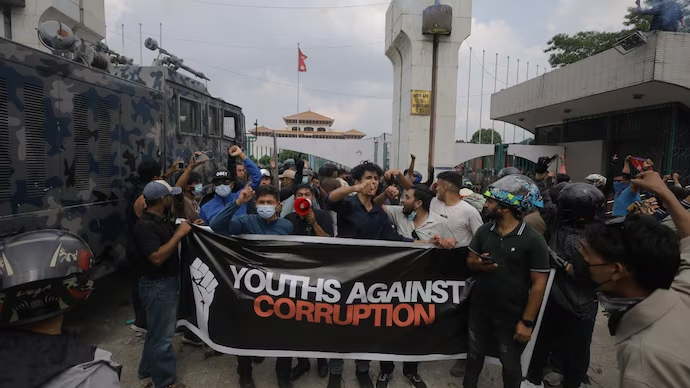
As we approach closer to International Day of Democracy on 15 September, I note that too often it feels like a ceremonial date, there in the calendar, acknowledged in our social media posts or a few articles but rarely lived. This year feels different because of what we are witnessing just across the border in Nepal.
Over the past week, the country’s young people have stepped onto the streets in a movement that has already become one of the most remarkable democratic awakenings of recent times. Their demand is clear: an end to corruption and the beginning of accountable governance. What makes this moment extraordinary is not only the courage to speak up but the way in which they have chosen to act. They have nominated their own candidate for the prime minister’s office. They are marching in huge numbers yet also bending down to collect trash after the rallies. They are organising traffic, repairing roads, giving first aid to strangers. They are not tearing down a nation, they are stitching it back together in full public view.
This is the generation that adults so often accuse of being lethargic, self-absorbed, or distracted by screens. In Nepal, the same generation has shown that democracy can be reclaimed and rebuilt when the young decide to act with clarity and purpose. They are proving that democracy is not just a system of elections and slogans. It is a lived responsibility where every citizen must carry their share of the weight.
Modern protests look very different from those of the past. They are no longer confined to placards and sit-ins. They are physical and digital at once, fuelled by the energy of young people who know how to use social media not only to amplify outrage but also to organise, to mobilise, and to build communities of action.
The world has seen hashtags rise and fade like shooting stars. Nepal’s youth have gone beyond that. They are grounding their protest in discipline, service, and responsibility. That is what makes it impossible to ignore.
And why should this matter to us across the border?
For educators in India, there is a powerful reminder here. Democracy is only as strong as the awareness of its youngest citizens. A classroom that teaches civics as a dry subject but does not teach students how to live its values is missing the point. Critical thinking, civic sense, and media literacy are no longer optional add-ons. They are survival skills in a democracy that must constantly defend itself against apathy, misinformation, and abuse of power.
The message is not that Indian students must take to the streets at the first sign of discontent. The message is that they must never take their rights for granted. They must understand that those in power are always less powerful than the power of the people. Questioning authority with responsibility, demanding accountability without violence, and raising their voice when it matters most are not acts of rebellion. They are the beating heart of democracy.
Teachers, parents, and institutions often worry that if children are taught to question, they will lose respect for authority. Nepal’s youth are showing us that the opposite is true. When young people learn how to question responsibly, they do not weaken democracy. They strengthen it. They protect it. They ensure that it does not become an empty word.
On this International Day of Democracy, Nepal’s streets are giving us a lesson no textbook can. Democracy is not a static gift handed down by leaders. It is a daily act of participation, awareness, and responsibility. If we want India’s democracy to remain alive and resilient, our classrooms must prepare young people not only to dream about their future but also to defend the principles that make that future possible.
Education
UK and US Tighten Student Visas: What Indian Schools and Students Must Know
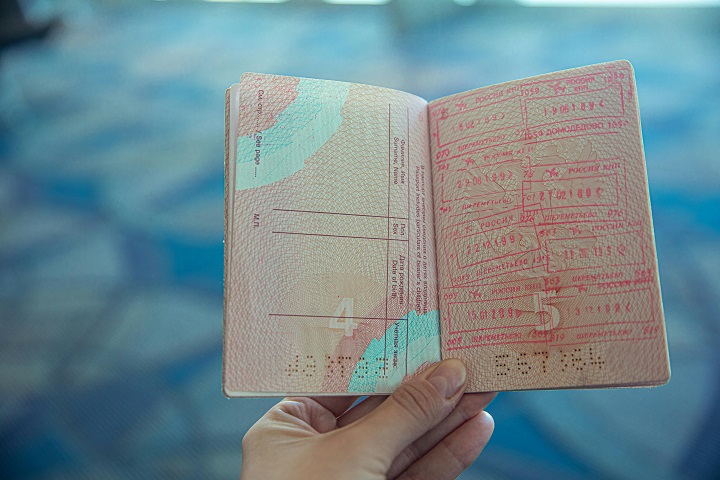
The tightening of student visa policies in the US and UK has created understandable anxiety among Indian families.
In the UK, the Graduate Route visa may be reduced from two years to 18 months for undergraduates and master’s graduates, while doctoral students may keep three years. Most taught master’s students can no longer bring dependents, the country has raised proof of funds by over 11%, moved to digital e-visas and tightened university compliance.
The US has proposed limiting the F-1 visa to a fixed four-year term, requiring extensions for longer programmes such as PhDs. Interview waivers have been eliminated, and third-country applications are no longer permitted. Backlogs at Indian consulates have worsened, and a new $250 Visa Integrity Fee will soon add to costs.
While complex, these changes reflect a global trend: governments are balancing immigration management with continued student flows. For Indian applicants, this means approaching the process with a sharper focus and stronger preparation.
What these changes mean for Indian students
The proposed cut of the Graduate Route visa to 18 months may cause concern, but this timeframe is enough to build career foundations, especially for students who engage early with employers. Restrictions on dependants may deter older applicants, but younger students will still find the UK attractive. The move to digital e-visas actually simplifies the verification process, while higher proof of funds requirements will require earlier financial planning. Additionally, English language changes should not affect Indian applicants, who already meet or exceed the required standards.
In the US, the proposed four-year F-1 limit introduces uncertainty for PhD students; yet, the country still offers unmatched academic choices, world-class research opportunities, and globally valued degrees. The loss of interview waivers, the ban on third-country applications and the new fee add costs and delays, but with early planning and budgeting, these hurdles are manageable. For many families, the academic ecosystem, extensive networks and long-term career benefits of a US education outweigh the administrative challenges.
How admissions counsellors and schools can guide students
Schools and counsellors now have a greater responsibility. Planning must begin early, whether preparing for tests, selecting courses or booking visa appointments, so backlogs and rule changes cause less disruption. Financial planning is equally critical, as higher UK proof of funds and new US fees make it essential to understand costs well in advance. Counsellors should also help students think long term, making strategic academic and career choices while exploring alternatives beyond the US and UK. With preparation and broad awareness, families can navigate uncertainty without losing sight of their goals.
Looking beyond the US and UK
These changes should not deter Indian families from considering the US or UK. Both remain prestigious destinations with world-class academic ecosystems. At the same time, I encourage families to keep alternatives in mind. Canada, Ireland, Australia and parts of Europe offer attractive post-study work options, while Singapore, Japan and the UAE are emerging as strong contenders closer to home.
In fact, at The Red Pen, pre-COVID, we saw families looking at an average of two destinations. This has now moved to 3.2. Keeping options open is a good idea.
Students can also explore new-age Indian universities such as Ashoka, Krea, Plaksha, FLAME and Jindal, which offer programmes on par with international standards. In addition, 12 global universities are opening campuses in India. While Deakin University, Wollongong University and the University of Southampton are already established, new entrants from 2026 include the Illinois Institute of Technology, University of Liverpool, Queen’s University Belfast, Coventry University, University of York, University of Western Australia, University of Aberdeen, Istituto Europeo di Design and Western Sydney University.
While tighter visa rules demand careful planning, expert guidance ensures that international education remains firmly within reach.
This article is authored by-

Namita Mehta- President and Partner, The Red Pen
Namita drives business growth and global partnerships at The Red Pen, representing the firm at international education forums and building key alliances, including a landmark collaboration with U.S. News & World Report. Recognised among BW Education’s 40 Under 40 and The PIE’s 50 Voices in Leadership, she has twice been shortlisted for the HerRising Awards. Namita has judged the PIE Education Awards, spoken at HSBC, Ashoka University, IC3 and Master’s Union, and contributed to leading publications such as Economic Times, Mint, Hindustan Times and The PIE News. She also serves on the advisory board of The Outreach Collective.
Education
Kidspreneurship Appoints Kushark Jaiswal as Chief Global Officer to Drive International Expansion
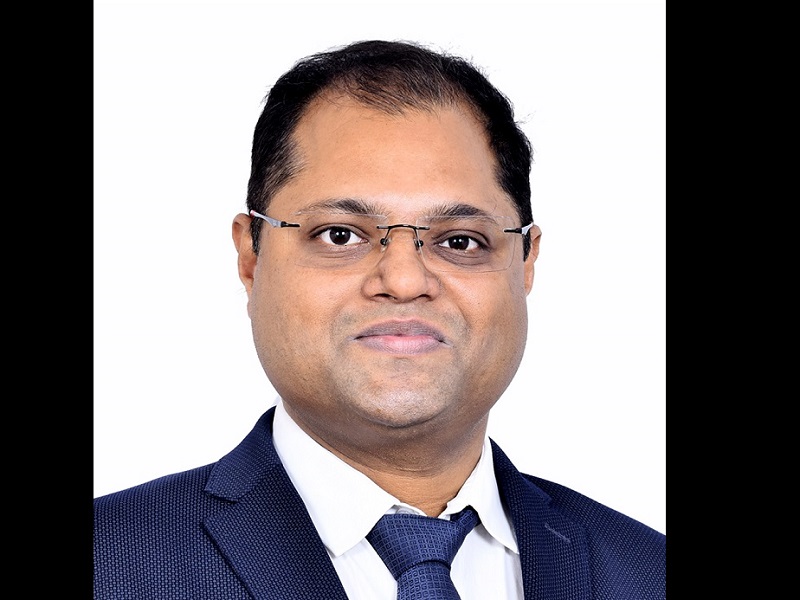
Kidspreneurship, the Singapore-based global EdTech venture focused on building entrepreneurial mindsets in children, has announced the appointment of Kushark Jaiswal as its Chief Global Officer. In this role, he will lead the company’s ambitious international expansion, leveraging its current base of 20,000 learners across multiple countries.
Jaiswal brings over 21 years of leadership experience in education, international sales, and business development. He most recently served as Vice President of International Sales at Educational Initiatives, where he expanded the company’s footprint across global markets. His career also includes senior positions as Director, Founder, and Head of International at leading education ventures, where he built large-scale partnerships with schools, governments, and institutions worldwide. Holding a Master’s in Entrepreneurship and Management from TAPMI, along with dual degrees in Law and Commerce, Jaiswal brings a unique blend of entrepreneurial vision, legal insight, and commercial expertise.
With his appointment, Kidspreneurship is preparing to accelerate its reach across APAC, the Middle East, Africa, LATAM, and Europe, as it works towards its mission of impacting over one million young learners globally by 2030.
Speaking about his new role, Jaiswal said, “What excites me most about Kidspreneurship is its ability to combine creativity, critical thinking, and entrepreneurship into a seamless, scalable model for schools. Around the world, education leaders are looking for partners who can bridge the gap between vision and execution. I am thrilled to join Kidspreneurship in taking this mission global and shaping the next generation of changemakers.”

Swati Gauba Kochar, Founder and Thinker in Chief, Kidspreneurship
Swati Gauba Kochar, Founder and Thinker in Chief at Kidspreneurship, called the appointment a pivotal moment. “Kushark’s experience in scaling global education ventures and his deep understanding of diverse markets will help us fast-track our vision of making entrepreneurial education accessible to every child, everywhere.”

Tanya Sarin, Co-Founder and Chief Learning Officer, Kidspreneurship
Tanya Sarin, Co-Founder and Chief Learning Officer, added, “Our curriculum is designed to spark curiosity, creativity, and problem-solving in young learners. With Kushark leading our international expansion, we will be able to bring this transformative learning to millions more children across cultures and geographies—equipping them not only to dream, but to build.”
Kidspreneurship has positioned itself as a bridge between policy and practice. With entrepreneurial and 21st-century skills already integrated into education policies worldwide, schools often struggle with classroom implementation at scale. Kidspreneurship provides a plug-and-play ecosystem that includes a multi-year structured curriculum, maker kits, tinkering experiences, an AI-powered digital platform for assessments, and teacher enablement programmes. This model ensures smooth adoption and measurable impact across geographies.
Education
Parliamentary Panel Calls for Media Literacy Curriculum in Schools
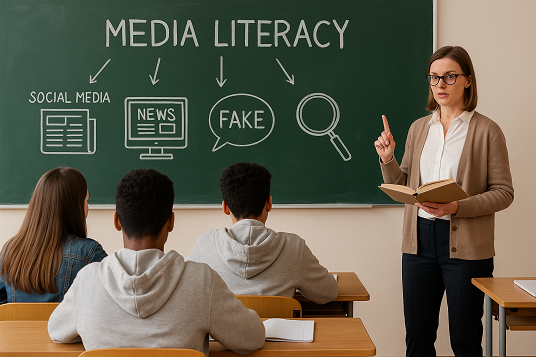
A parliamentary panel has raised strong concerns over the unchecked spread of fake news, calling it a “serious threat” to democracy, public order, and individual safety. In its draft report adopted on September 9, the Standing Committee on Communications and Information Technology, chaired by Nishikant Dubey, recommended sweeping reforms to curb misinformation while ensuring freedom of speech is not undermined.
While the report contains provisions such as stricter penalties, amendments to penal laws, and mandatory fact-checking across media houses, one of its most significant recommendations is the introduction of a comprehensive media literacy curriculum in schools. The committee stressed that misinformation is not only a political or technological problem but also an educational one, requiring long-term interventions that prepare young citizens to navigate information responsibly.
The proposed curriculum would train students to critically analyse media content, identify credible sources, understand the influence of algorithms, and distinguish between facts, opinions, and propaganda. Teacher training and awareness campaigns are expected to form a major part of this initiative, ensuring that schools can act as the first line of defence against misinformation. By embedding media literacy into the classroom, the government hopes to build a generation that is resilient to fake news, deepfakes, and manipulative content.
Such a curriculum could empower students to develop critical thinking skills and a questioning mindset, which are essential in a digital-first world. Students would not only learn to verify information but also become responsible content creators, aware of the ethical dimensions of what they share online. At the same time, educationists warn against turning media literacy into a tool for censorship or political indoctrination. The curriculum must avoid prescribing “what to think” and instead focus on “how to think,” giving children the tools to independently assess information rather than forcing state-approved narratives.
The committee has also recommended teacher training programmes, digital grievance redressal systems, and collaborative efforts between government, private media, and independent fact-checkers. It cited global models such as France’s law on election misinformation and urged India to take a leadership role in framing policies that address both local and cross-border misinformation.
Among other measures, the draft report proposed mandatory internal ombudsmen in all media organisations, stricter penalties for repeat offenders, licensing requirements for AI content creators, and mandatory labelling of AI-generated material. The panel also pushed for inter-ministerial collaboration through a dedicated task force to address misinformation that crosses national borders.
The report echoed concerns over the “safe harbour” clause in Section 79 of the IT Act, which protects intermediaries from liability for third-party content. It recommended exploring amendments to hold platforms accountable without stifling free speech.
Terming fake news a global challenge that undermines democratic institutions, market stability, and individual reputations, the panel underlined that India cannot afford complacency. The move to integrate media literacy into education could be one of the most transformative outcomes of the committee’s recommendations, equipping the next generation to live, learn, and lead responsibly in an age of digital overload, if implemented fairly.
Education
National Task Force Calls for Wider Participation in Surveys on Student Well-being and Suicide Prevention
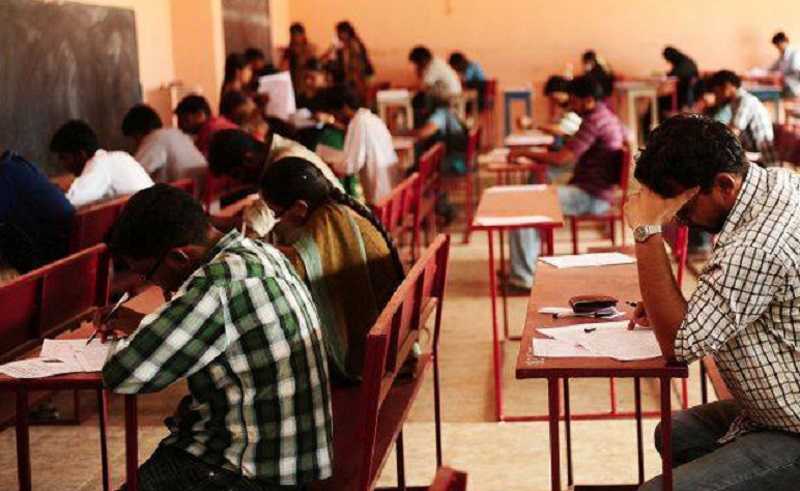
On the eve of World Suicide Prevention Day 2025, the National Task Force (NTF) on Student Well-being and Suicide Prevention has appealed to students, parents, faculty, institutions, and mental health professionals across India to participate in nationwide surveys aimed at addressing the growing crisis of student suicides.
The Task Force has been mandated to prepare a comprehensive report that identifies the major causes of student suicides, including ragging, discrimination, academic pressure, financial stress, and stigma around mental health. It will also examine systemic shortcomings and recommend actionable measures to improve institutional support systems.
India is home to over 60,380 Higher Education Institutions (HEIs) with 4.46 crore students and 16 lakh faculty members, according to AISHE 2022–23. However, the NCRB’s 2022 data revealed that 13,044 students died by suicide, making up 7.6 percent of all suicide deaths in the country. These alarming figures underscore the urgent need for coordinated interventions.
So far, the NTF has visited 13 institutions across Delhi, Haryana, Karnataka, and Tamil Nadu, holding consultations with students, faculty, and administrators. Special focus has been placed on the experiences of disadvantaged groups, including SC-ST students, students with disabilities, and queer students. Civil society groups and NGOs have also contributed valuable inputs during these consultations.
The Task Force is currently running online surveys in English and Hindi to capture diverse perspectives. To date, over 80,000 students, 10,000 faculty members, 15,000 parents, 700 mental health professionals, and 8,000 concerned citizens have already responded. The surveys are open to the public at ntf.education.gov.in.
Regulatory bodies such as AICTE, NMC, Pharmacy Council, Nursing Council, and Bar Council have been instructed by the Department of Higher Education to ensure institutional compliance. All HEIs registered under AISHE must complete the institutional survey by 12th September 2025, providing data on student composition, mental health services, dropout rates, grievance redressal mechanisms, and measures related to well-being.
The NTF has also launched ULLAS Literacy Week from 1st to 8th September 2025, encouraging collective participation. Its final report will aim to reshape how Indian higher education institutions respond to mental health challenges, reaffirming the government’s commitment to preventing student suicides and fostering safe, inclusive campuses.
Take the survey here: https://ntf.education.gov.in
Education
Himachal Joins List of Fully Literate States as India Marks International Literacy Day 2025
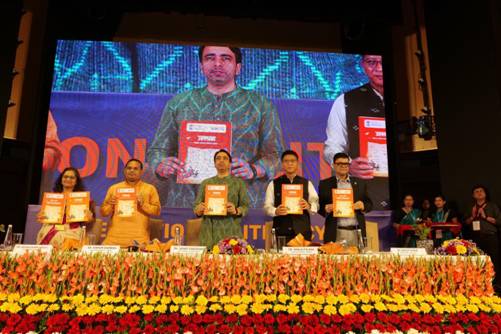
The Ministry of Education celebrated International Literacy Day (ILD) 2025 at Dr. Ambedkar International Centre, New Delhi, with the theme “Promoting Literacy in the Digital Era.” The event was addressed by Minister of State for Skill Development and Entrepreneurship and Minister of State for Education, Jayant Chaudhary, alongside senior officials, education leaders, learners, and volunteers.
A key highlight of the celebration was the announcement that Himachal Pradesh has become the fourth state to achieve full functional literacy, joining Tripura, Mizoram, and Goa. Ladakh, which declared itself fully literate in 2024, remains the first Union Territory to do so.
Union Education Minister Dharmendra Pradhan, addressing the gathering virtually, lauded India’s progress in literacy, noting that the national rate has risen from 74 percent in 2011 to 80.9 percent in 2023–24. He emphasised that literacy is more than just the ability to read and write, calling it a means of dignity, empowerment, and self-reliance. Pradhan also highlighted the transformative role of the ULLAS Nav Bharat Saaksharta Karyakram, which has enrolled over 3 crore learners with the support of 42 lakh volunteers, providing learning materials in 26 Indian languages.
Jayant Chaudhary praised the achievement of Himachal Pradesh, especially given the state’s challenging terrain, and underscored that communities, governments, and volunteers together made it possible. He further observed that literacy in India has now expanded to digital literacy, pointing to India’s Digital Public Infrastructure as an example of global leadership in education and inclusion.
During the event, the ULLAS Compendium was released, showcasing innovative teaching and learning materials. Representatives from Ladakh and Goa shared their strategies and best practices, while ULLAS Literacy Week 2025, held from 1st to 8th September, was noted for its nationwide drive to register non-literates, volunteers, and neo-learners. The celebrations reaffirmed India’s commitment to building a literate and developed Bharat, aligned with the vision of Viksit Bharat.
Education
International Literacy Day 2025: Beyond Reading and Writing in the Digital Era
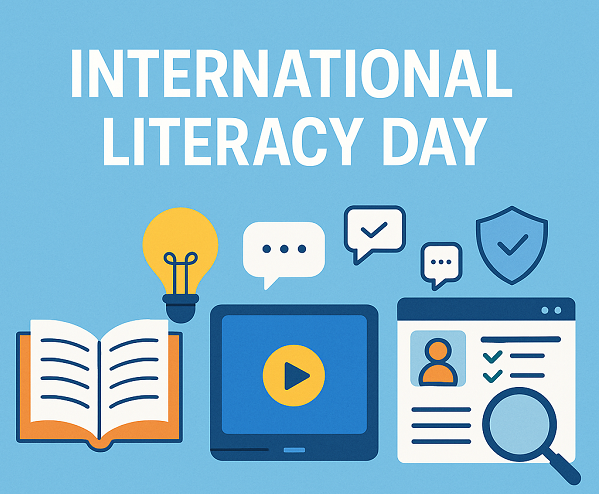
“Education is not only the birthright of every human being but also the weapon of social change.”
Dr B. R. Ambedkar’s words carry even more weight today as we celebrate International Literacy Day 2025. This year’s theme, “Promoting literacy in the digital era,” reminds us that literacy no longer begins and ends with pen and paper.
A Journey Worth Remembering
India’s literacy story is one of resilience. In 1951, only 16 out of every 100 Indians could read and write. By 2022, that number had climbed to 77.7 per cent. The Right to Education Act of 2009 opened the doors of schools to millions who might otherwise have been left behind. Yet numbers alone do not tell the full story. Getting children into classrooms was only the first battle. The bigger challenge lies in what and how they learn.
Literacy in the Age of Screens
In a world where screens dominate, literacy now means much more than decoding text. It is about being able to access, understand, evaluate, and create digital content in safe and responsible ways. A teenager scrolling endlessly on social media might look “digitally literate,” but true literacy asks whether that teenager can spot a fake news story, respond appropriately to cyberbullying, or understand that their digital footprint will outlive their mood.
The dangers are real. A BBC feature this year explained how adolescence itself makes young people more vulnerable to online manipulation because their brains are wired for risk-taking and peer approval. Platforms exploit these vulnerabilities with algorithms that feed them echo chambers of extreme views and endless scrolling loops. What looks like harmless entertainment often becomes a powerful shaper of values and identities.
At the same time, teenagers are seeking comfort in unexpected places. An ETV Bharat report revealed that many Indian students now turn to AI chatbots for emotional support. Experts worry that without proper guidance, children may start to trust technology more than people, with little understanding of how these systems work or what agendas they may carry. Digital literacy, therefore, is not simply about knowing how to use a device but about learning how to navigate relationships, trust, and choices in a digital-first world.
The Missing Lessons
Alongside digital literacy, we are also missing some of the most practical lessons of life. An India Today feature pointed out that while our students can solve complex equations, very few know how to calculate tax, understand savings, or even read the fine print of a bank loan. In an age of instant loans and digital payment apps, this lack of financial literacy is dangerous. Children should be learning how to protect themselves from online scams, how to recognise manipulative advertisements, and how to make decisions that safeguard their futures.
The truth is, literacy today is incomplete without responsibility. Children may be skilled at clicking, posting, or streaming, but if they do not know what to believe, what to share, and what to ignore, they are vulnerable. Civic sense must become part of the digital literacy package. How we behave online is not separate from who we are as citizens. Words can wound, misinformation can destabilise, and silence in the face of bullying can be as harmful as participation.
For India to truly lead in the digital era, we must expand our vision of education. That means increasing education budgets, investing in teacher training, and ensuring that technology-enabled learning does not just deliver content but builds character. It also means recognising that the skills of tomorrow include empathy, resilience, financial wisdom, and civic responsibility.
Ambedkar reminded us that education is the most powerful weapon of social change. In 2025, that weapon is not only the ability to read books but the ability to read the world. Literacy is about survival, about belonging, and about preparing our children not just to live in the digital era but to shape it responsibly.
International Literacy Day should remind us that while we have come far since 1951, the journey is far from over. The future depends on whether we can teach the next generation not only to read and write, but also to choose wisely, live responsibly, and stand tall as citizens of a digital world.
-
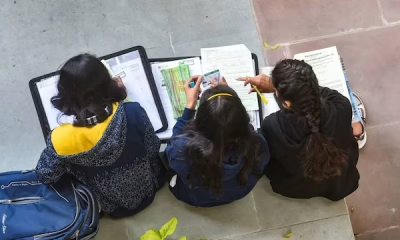
 Education2 months ago
Education2 months agoNCERT Launches New Class 5 & 8 Textbooks, Makes Art Education Mandatory
-
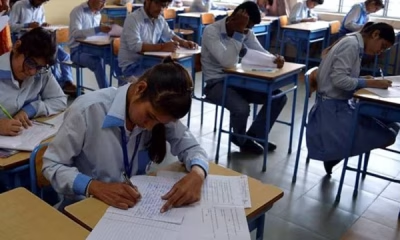
 Education3 months ago
Education3 months agoCBSE To Conduct Board Exams Twice for Class 10 from 2026
-
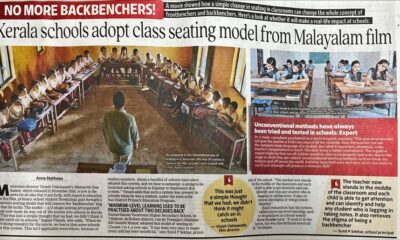
 Education3 months ago
Education3 months agoNo More Backbenchers: How a Simple Seating Shift Is Reimagining Learning
-

 Education3 months ago
Education3 months agoGovernment Doubles Down on Coaching Centres: New Panel Signals Stronger Regulation Ahead
-
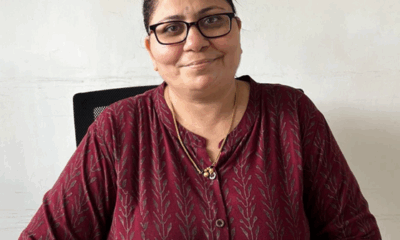
 Education2 months ago
Education2 months agoIn Every Smile, a Victory – Sandhya Ukkalkar’s Journey with Jai Vakeel’s Autism Centre
-
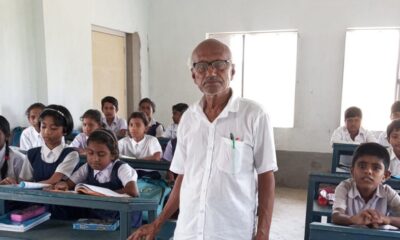
 Education2 months ago
Education2 months agoThe Man Who Called His Students Gods: Dwijendranath Ghosh
-
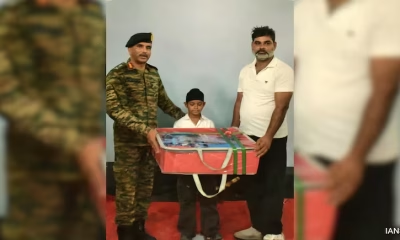
 Education2 months ago
Education2 months agoIndian Army to Sponsor Education of 10-Year-Old Who Aided Troops During Operation Sindoor
-

 Education2 months ago
Education2 months agoNCERT’s New Class 8 History Textbook Addresses “Darker Periods”, Highlights Religious Intolerance and Resilience
-
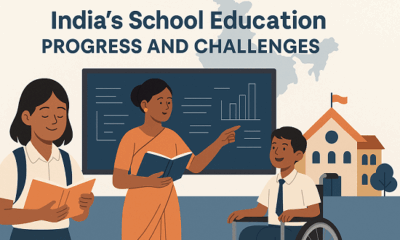
 Education4 weeks ago
Education4 weeks agoBeyond the Numbers: Reading Between the Lines of UDISE+ 2024–25
-

 Education1 month ago
Education1 month agoEducation with Purpose: Shaping Responsible Learners for a Better Tomorrow



